Expo 2020 Dubai: the ultimate tour, from districts to pavilions
Expo 2020 Dubai has opened and with it three structures highlighting Sustainability, Mobility, and Opportunity, a Thematic District, and 192 national pavilions; take the tour
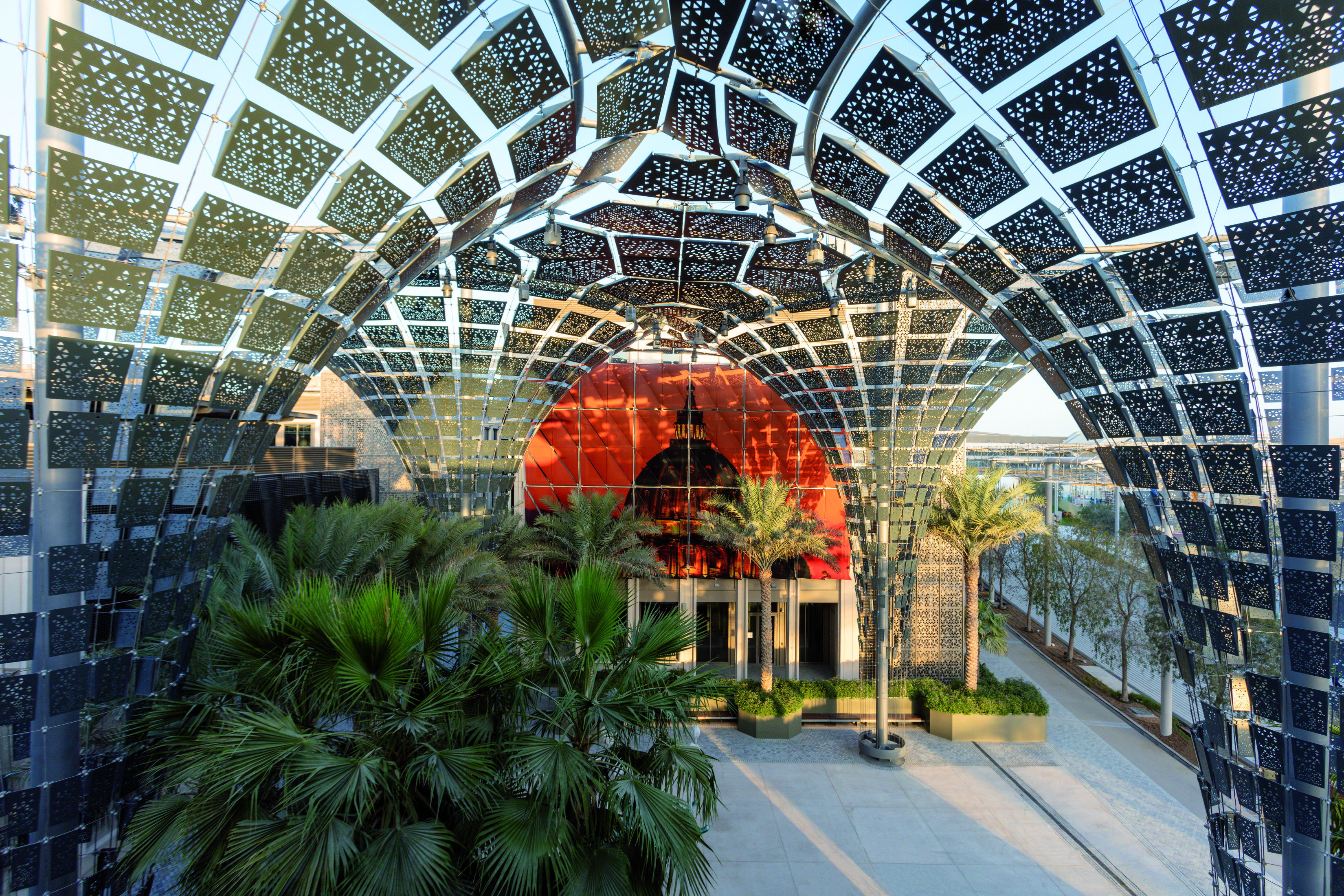
Unsurprisingly, it has been a slow couple of years for global gatherings and international travel, but the tail end of 2021 brings with it a hint of optimism and a shy promise of better times – at least in some parts of the world. And right on cue, Expo 2020 Dubai has just opened – one year on from its original launch date, which was delayed due to the ongoing pandemic. Still, this has not dampened the participants’ enthusiasm as representatives from across the globe are looking to the UAE for this month’s inauguration, taking part in events in architectural pavilions and shows that are set to last till spring 2022.
This year's agenda is rich and varied, addressing key global concerns surrounding sustainable approaches; the future of transport and travel; and innovative takes for what's to come, from exciting new ideas to activities for young people and communities. The Expo 2020 Dubai site is arranged accordingly, in three main areas, each of which features a flagship pavilion to best project the district's core message. A structure named Terra, designed by Grimshaw Architects, headlines the Sustainability section; Foster + Partners has spearheaded Mobility; and Kuwait-based AGi Architects is behind the Opportunity Pavilion.
Around them, some 190 country pavilions fight for the attention of visitors, as part of the Expo’s national participations. The Thematic District, designed by Hopkins Architects, connects all three aforementioned sections, as well as the various country pavilions together. This is an architectural extravaganza to impress and inspire.
Expo 2020 Dubai main district pavilions
Terra – The Sustainability Pavilion
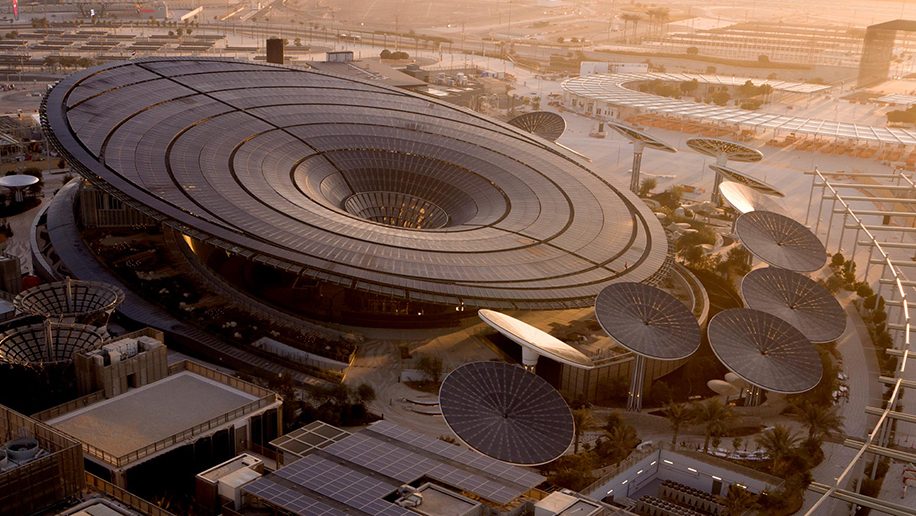
Designed by the British architecture practice Grimshaw Architects to highlight ingenuity and different strategies in the field of sustainability, this pavilion loosely resembles flowers or leaves turned up towards the sun. Indeed, the design team drew inspiration from natural processes, such as photosynthesis, to compose their piece. And the approach is not only reflected in its looks. The pavilion captures energy from sunlight ,and fresh water from humid air, aiming to demonstrate a new way of living sustainably.
Alif – The Mobility Pavilion
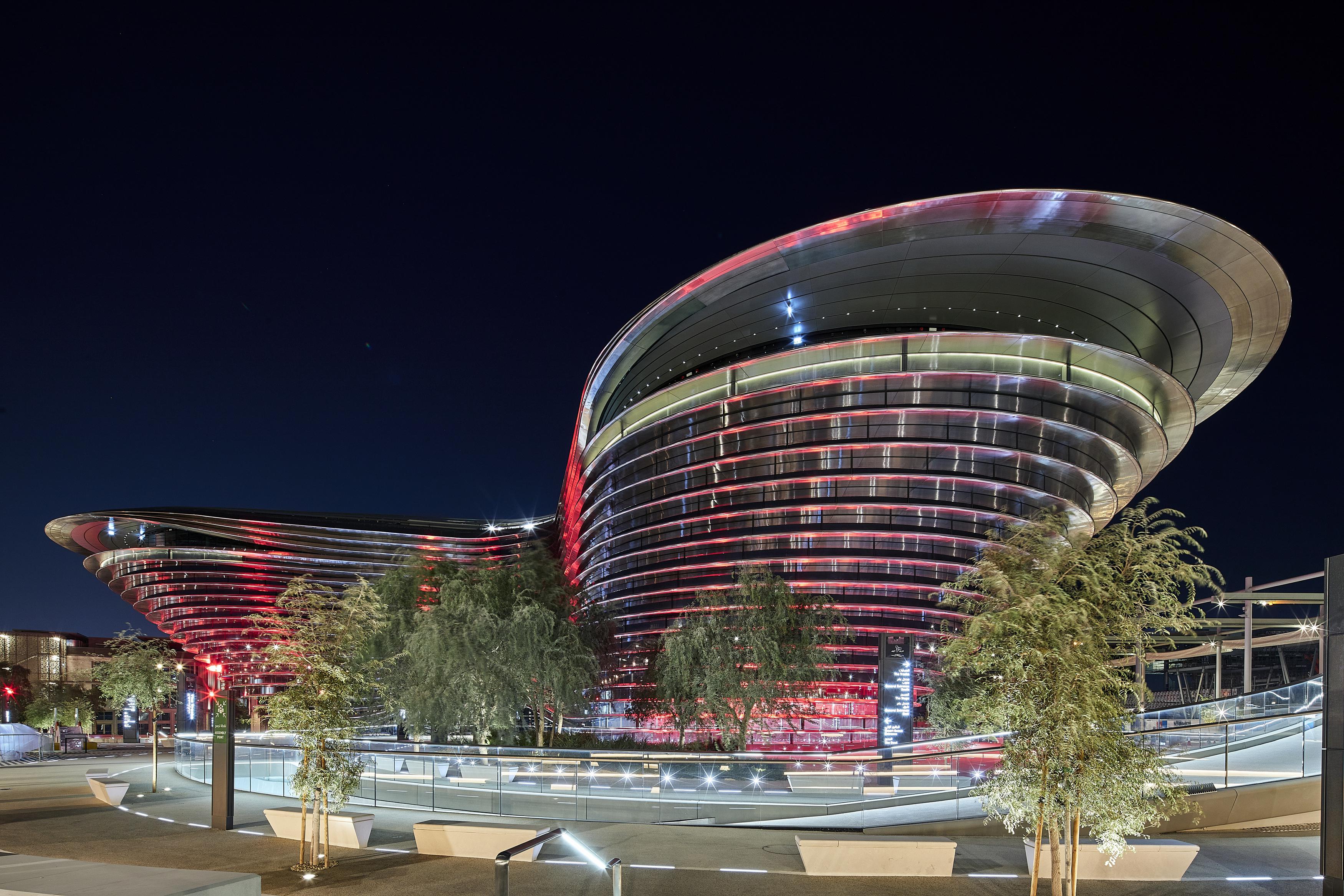
From Earth-bound vehicles to space exploration, this is the pavilion dedicated to all things mobile. Transport and technology on all levels come together in a space designed by Foster + Partners – a pavilion named Alif (after the first letter of the Arabic alphabet, symbolizing new beginnings, explain the architects). ‘This is the third World Expo that we have been involved in; the two previous were in Shanghai and Milan. These events are incredible opportunities to showcase innovation from around the world. Similarly, Alif – The Mobility Pavilion conveys new ideas of mobility in a simple, yet thought-provoking and engaging manner, as we look towards the future of Dubai and the UAE in its aspirations, its technology and its investment,’ says Gerard Evenden, head of studio at Foster + Partners.
Mission Possible – The Opportunity Pavilion
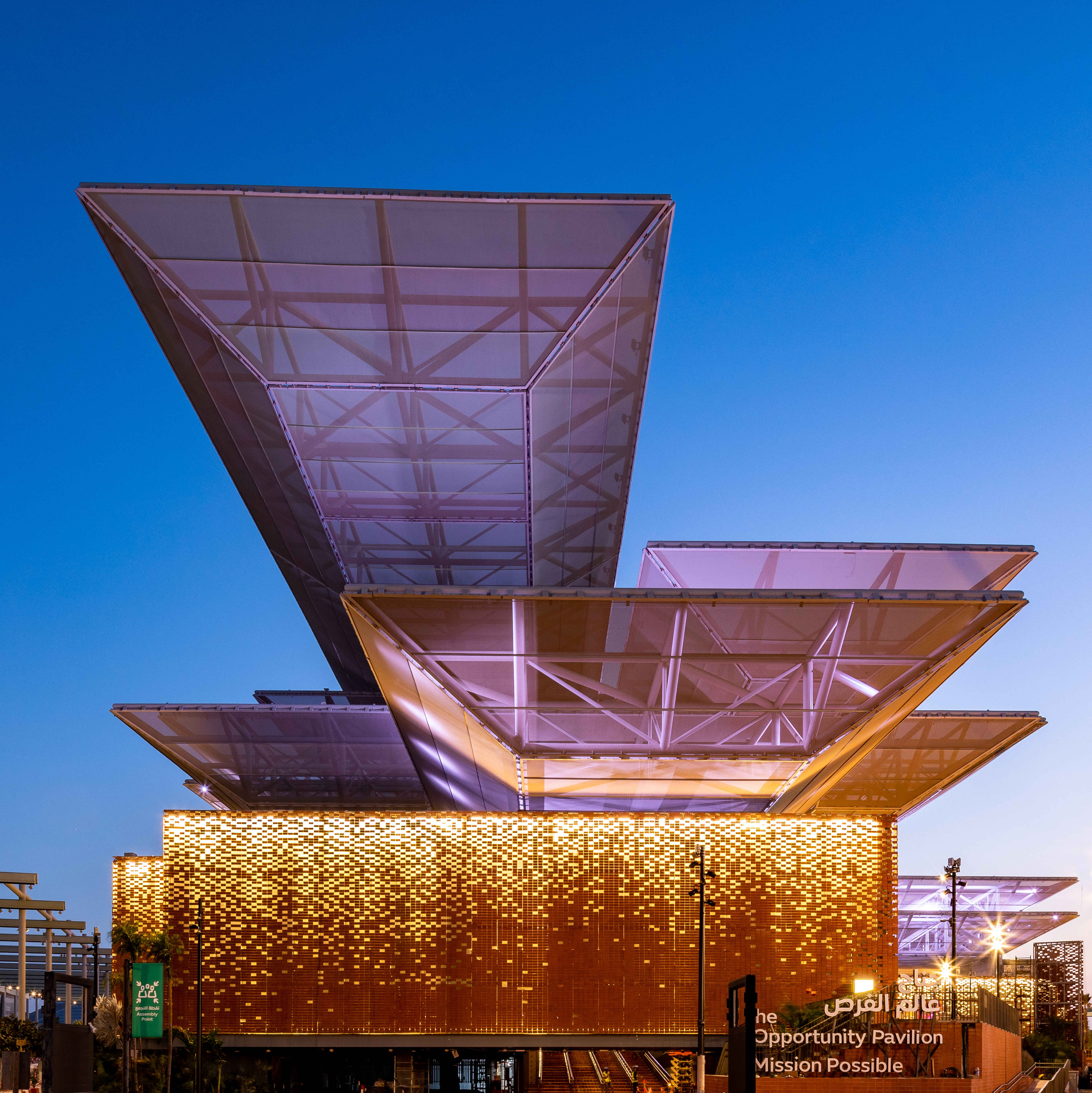
Joaquín Pérez-Goicoechea and Nasser Abulhasan, principals and founding partners of AGi Architects, led the design of the Opportunity Pavilion, which is fittingly named ‘Mission Possible’. While other pavilions focus on strategies, systems and objects that can help us change our future for the better, this district's mission is more orientated towards the human element. Celebrating the role that young people and communities have to play in making positive change, the structure is designed as a place of gathering, a public space for everybody to come together, focusing on collaboration and coexistence.
Thematic District
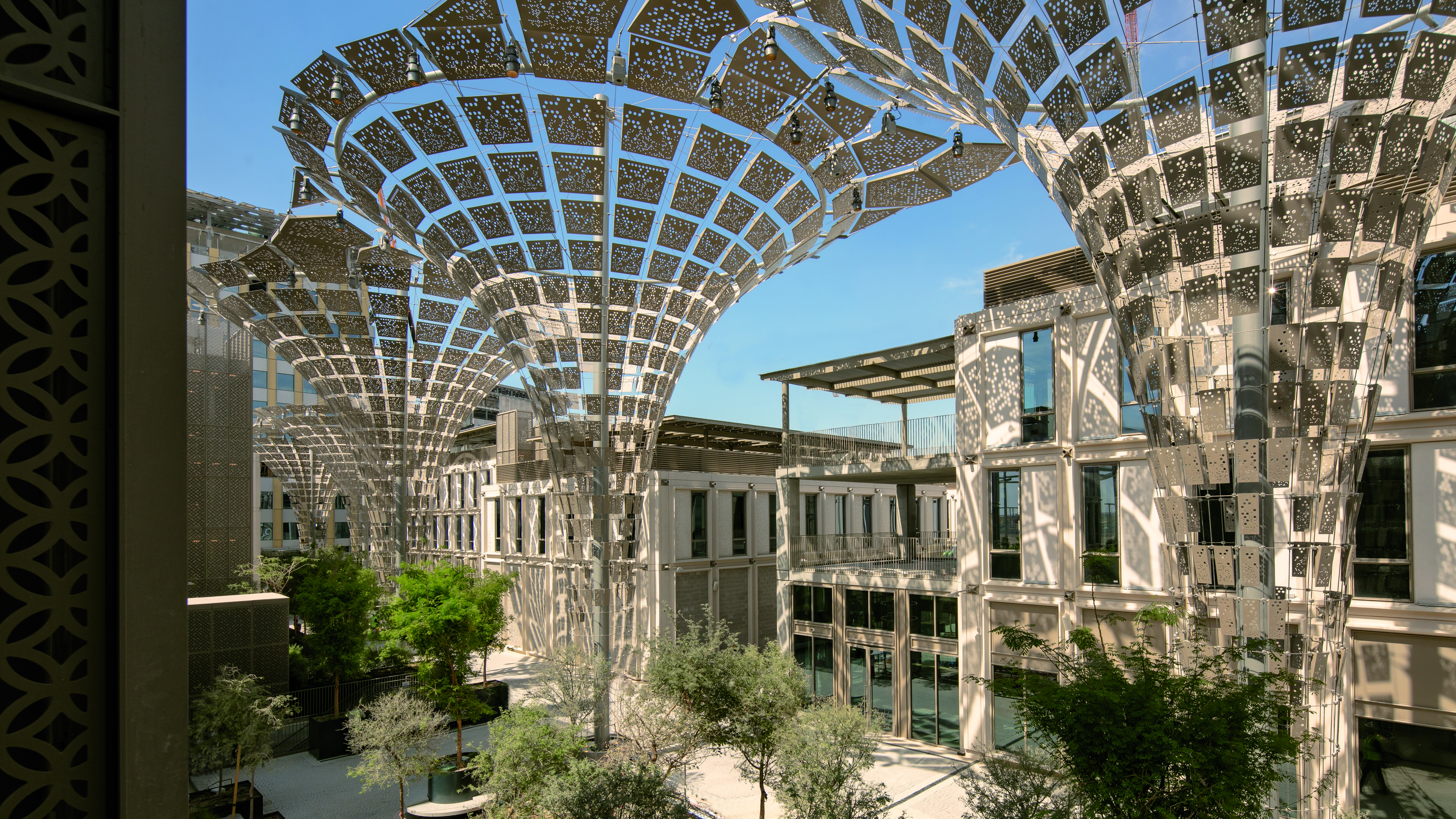
Bringing together the three main pavilions detailed above, as well as their wider sections and the national pavilions, the Thematic District has been masterplanned by Hopkins Architects. More of a wider landscape than a pavilion itself, this design was inspired by the traditional architecture of the Al Fahidi District in old Dubai, also drawing on the region's climate and colours. Around it, Mobility, Opportunity and Sustainability fan out in petal-shaped succession at the very heart of the Expo site.
Receive our daily digest of inspiration, escapism and design stories from around the world direct to your inbox.
Touring some of the Expo 2020 Dubai country pavilions
Italian Pavilion
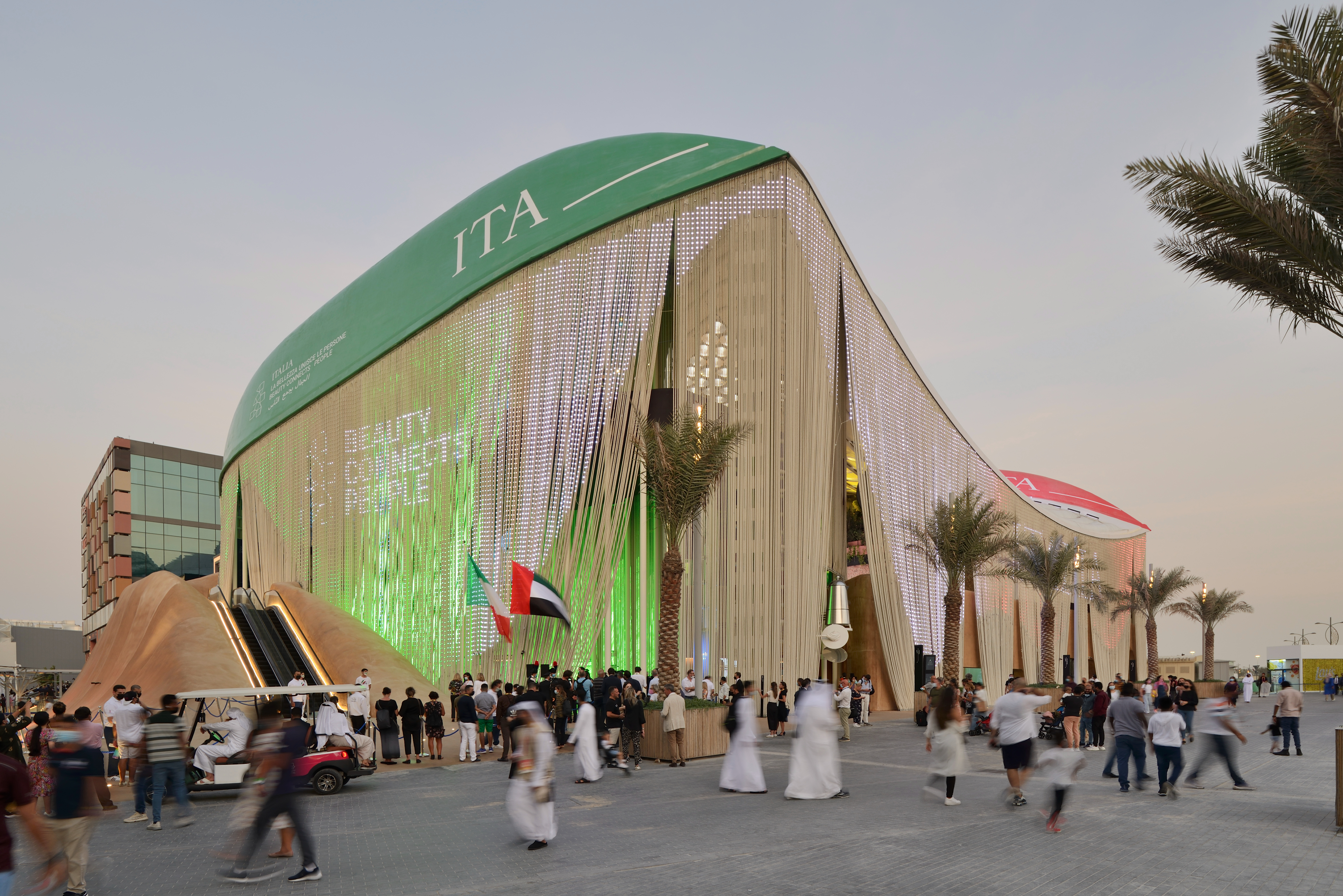
Designed by CRA-Carlo Ratti Associati and Italo Rota Building Office, with Matteo Gatto and F&M Ingegneria, the Italian Pavilion at Expo 2020 Dubai looks at reconfigurable architecture and circular design. Its façade is made of two million recycled plastic bottles, while the rest of the structure features innovative materials, such as algae, coffee grounds, orange peel and sand. ‘Our design for the Italian Pavilion deals with what I believe is architecture’s most important challenge today: advancing the double convergence between the natural and the artificial. It anticipates issues and suggests strategies that will be increasingly crucial for the future of our cities as we address the consequences of the current climate crisis,’ says Ratti, who is also director of the MIT Senseable City Lab at the Massachusetts Institute of Technology. ‘The pavilion keeps mutating into different forms. It speaks about reconfigurability both in the long term, because of its circularity, and in the short term, thanks to its use of digital technologies.’
Brazilian Pavilion

Within a fairly simple and straightforward pavilion design, visitors to the Brazilian Pavilion are set to get immersed in lush Brazilian landscapes, through clever projection mapping technologies. The piece is created by multidisciplinary design studio Cactus and features a 360-degree experience, inspired by nature and its potential. ‘We want the world to see and feel the beauty and intricacies of the country we call home,' says Marcelo Pontes, head of architecture for Cactus. ‘The process of achieving seamless user experience requires good design at its core. There were many technical roadblocks, including regional weather, sand, and heat, that made this project more difficult than anything else we have taken on before. Unlike traditional immersive experiences, which only focus on projection mapping inside spaces, we were designing for the entire exterior of the exhibit as well.'
Canadian Pavilion

The Canadian Pavilion features a creative installation by KANVA. The art piece, called Traces, is a ‘poetic vision of an uncertain future and a reflection upon our present'. The piece was specifically designed to create a sense of urgency around climate change. ‘The concept for Traces began with the location of the Canada Pavilion in the sustainability section of the Expo grounds, and with the main exhibition being inspired by Canadian landscapes and natural diversity,' says Rami Bebawi, a KANVA partner and lead architect of the Traces project. ‘We wanted to create something that would emphasize the threats that climate change and global warming pose to those same landscapes, and more specifically, to the species that inhabit them.'
Finnish Pavilion
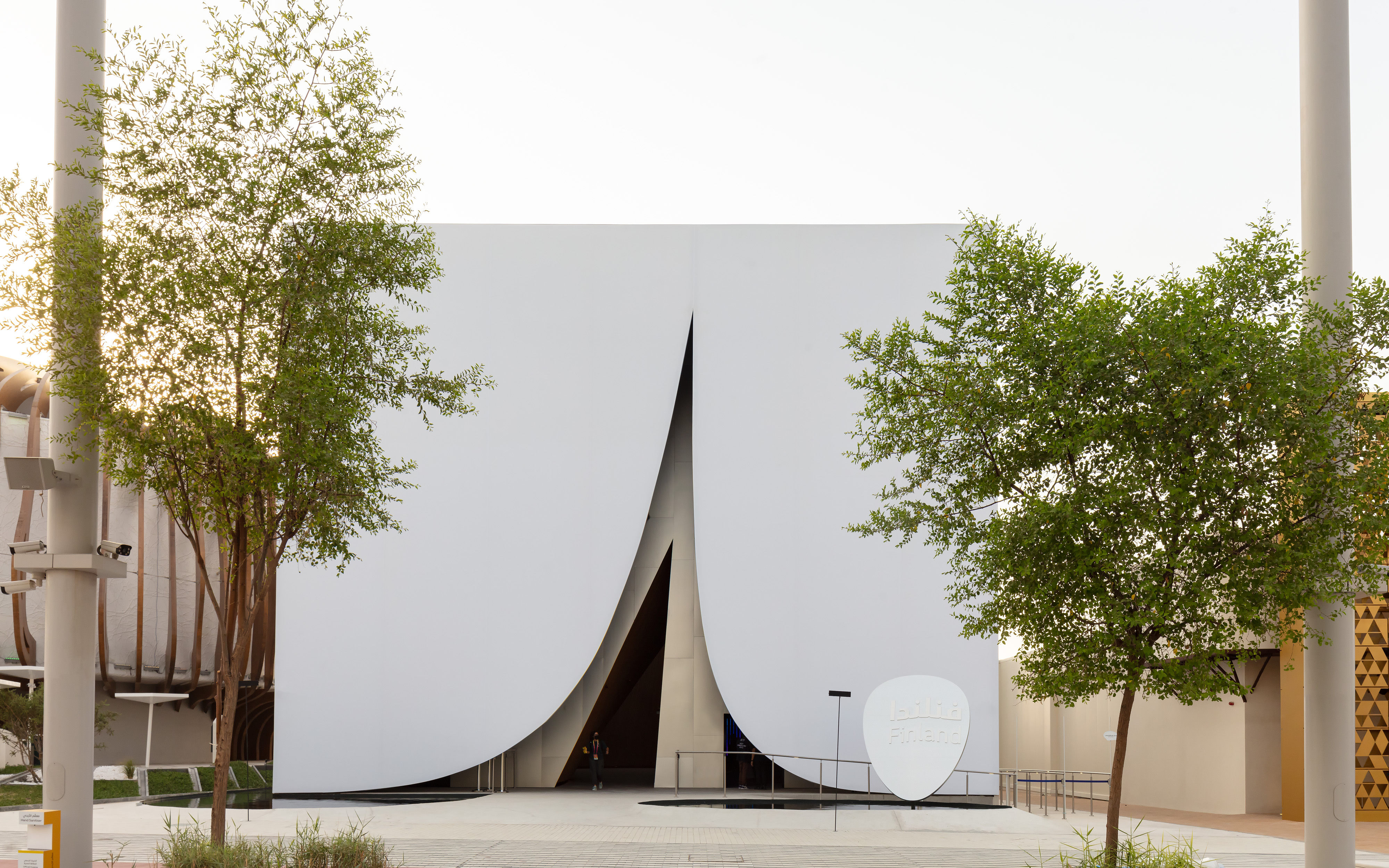
JKMM Architects is behind the Finnish Pavilion. ‘In designing the pavilion, we sought to bring a fragment of Finnish nature to UAE and Dubai,' says JKMM's Teemu Kurkela, who explains that it is titled Lumi, meaning ‘snow’ in Finnish. ‘The pavilion was inspired by the thin white layer of first snow that covers the Finnish landscape at the beginning of winter. The main entrance was inspired by a traditional Arabic tent. Two cultures meet in the architectural concept of the pavilion. Hopefully, this will be the best space in Expo for meeting face to face.' Sustainability was taken very seriously in the construction of the pavilion too. With very few exceptions, all materials and labour were sourced locally.
Moroccan Pavilion

Architects OUALALOU + CHOI are bringing traditional Moroccan building methods to Dubai with their pavilion. The building feature a 4,000 sq m rammed-earth façade – impressively, the largest of its kind. The structure comprises 22 stacked rectangular volumes that draw on the vernacular rammed-earth villages of Morocco. They are all connected by a continuous ‘inner street’.
Qatar Pavilion
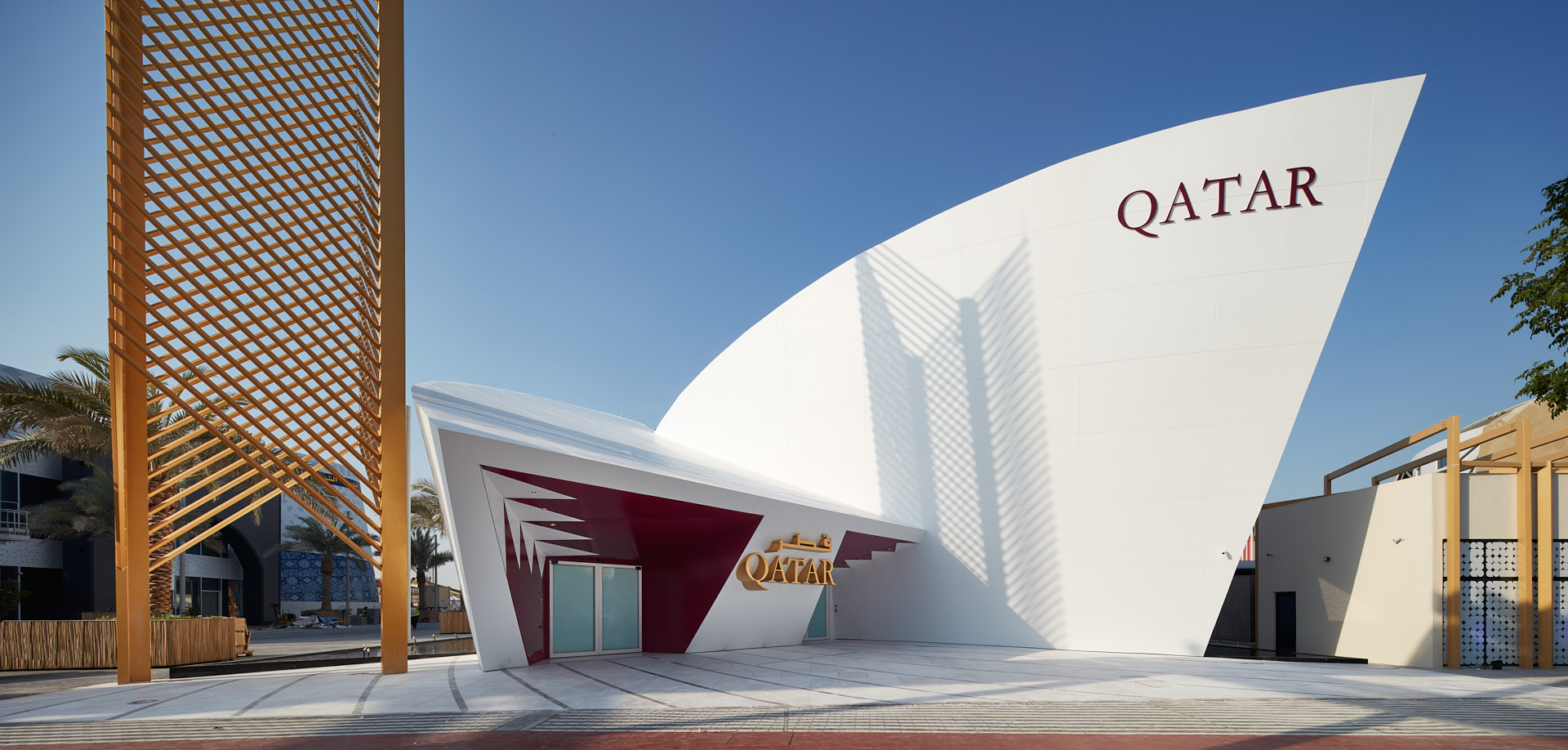
Renowned architect Santiago Calatrava is behind the design for the Qatar Pavilion at Expo 2020 in Dubai. The architecture draws on the four elements represented on the coat of arms of Qatar, the architect explains: ‘two crossed and curved swords, encompassing a dhow and island with palm trees'. He continues: ‘Inspiration is derived from Qatar’s national emblem to truly capture the essence and vision of the nation. The architectural gesture and structural form of the pavilion, which houses the entire visitor experience, mirrors the shape of the dhow and its grand sails. The sculptural monument at the entrance of the pavilion represents an abstract translation and fusion of two intertwined palm trees, while the reflective pools and integrated water features surrounding the pavilion represent the Arabian Gulf, which encompasses the nation of Qatar.'
UAE Pavilion
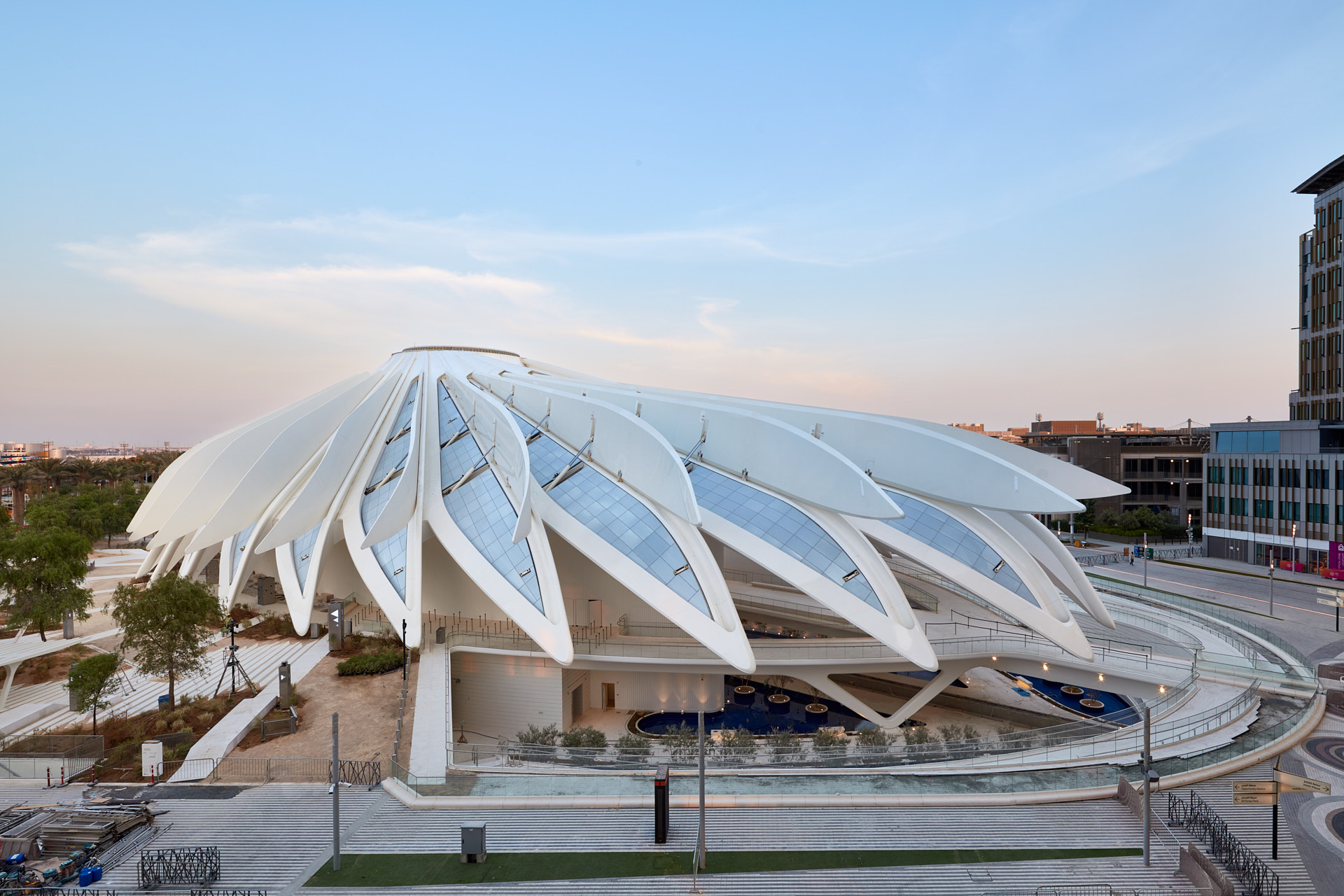
Santiago Calatrava also designed the UAE Pavilion. ‘We are honoured to unveil the UAE Pavilion at Dubai Expo 2020. The design emulates a falcon in flight, symbolic to the country, and is rooted in UAE’s local rich history and cultural heritage,' says the architect. The falcon is the national bird of the UAE, and the design pays homage to the region's heritage and traditions. The pavilion's wing-like roof elements seem to defy gravity.
UK Pavilion
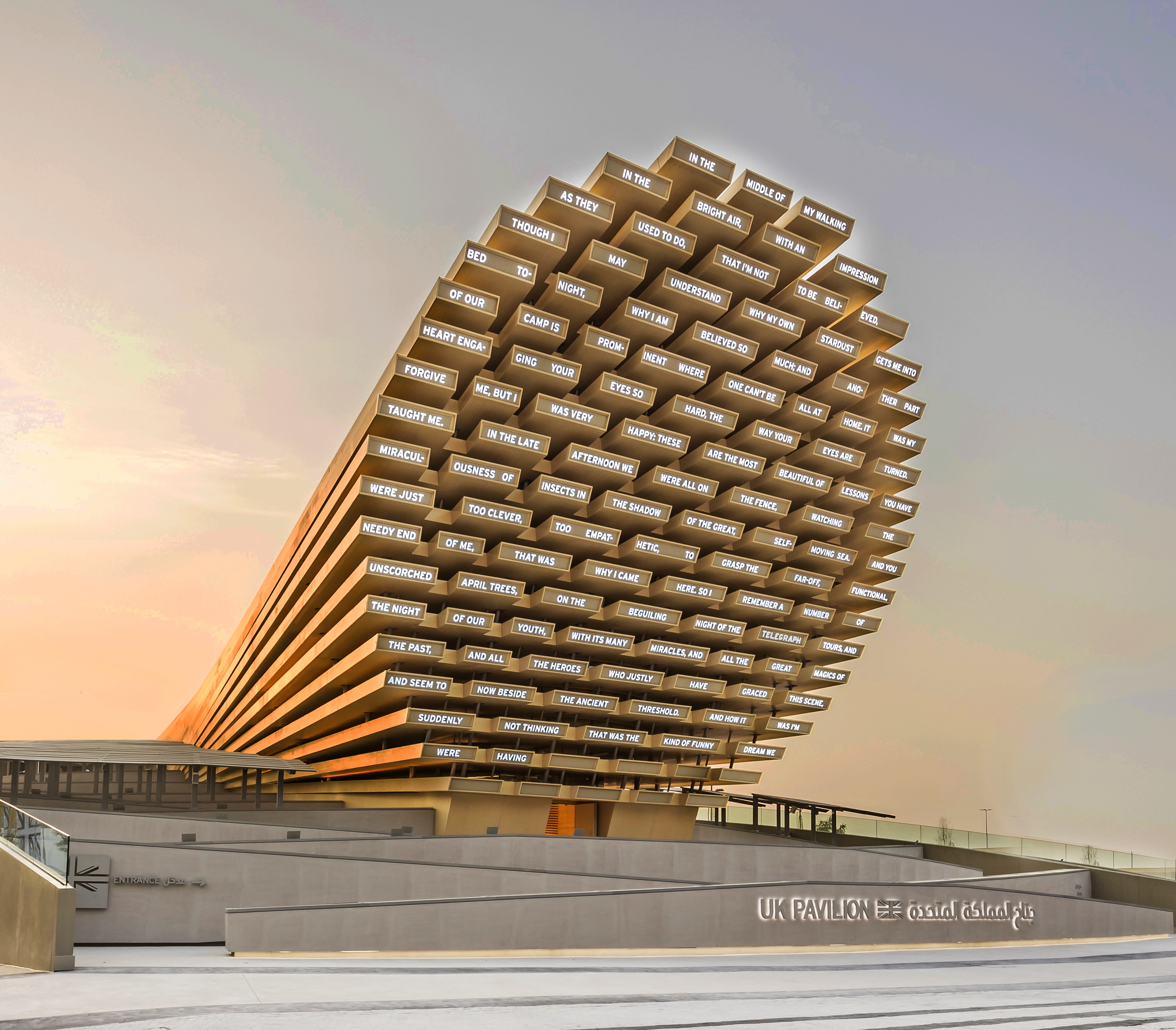
The UK Pavilion, titled Poem Pavilion, was created by leading artist and designer Es Devlin. Working closely with structural engineers Atelier One, environmental design consultants Atelier Ten, executive architects Veretec and creative agency Avantgarde, Devlin became the first woman to design the UK Pavilion since the Expo's inception. The design offers a take on machine-generated poetry, in architectural form. ‘Algorithms are among us, they are an ever-growing part of our culture, their output is based on what they are trained on and who trains them,' says Devlin. ‘The pavilion is at once an expression of the ideal of a culturally diverse Britain that I grew up with, tempered with our growing awareness of the part algorithms play in shaping the future of our culture.'
Dutch Pavilion
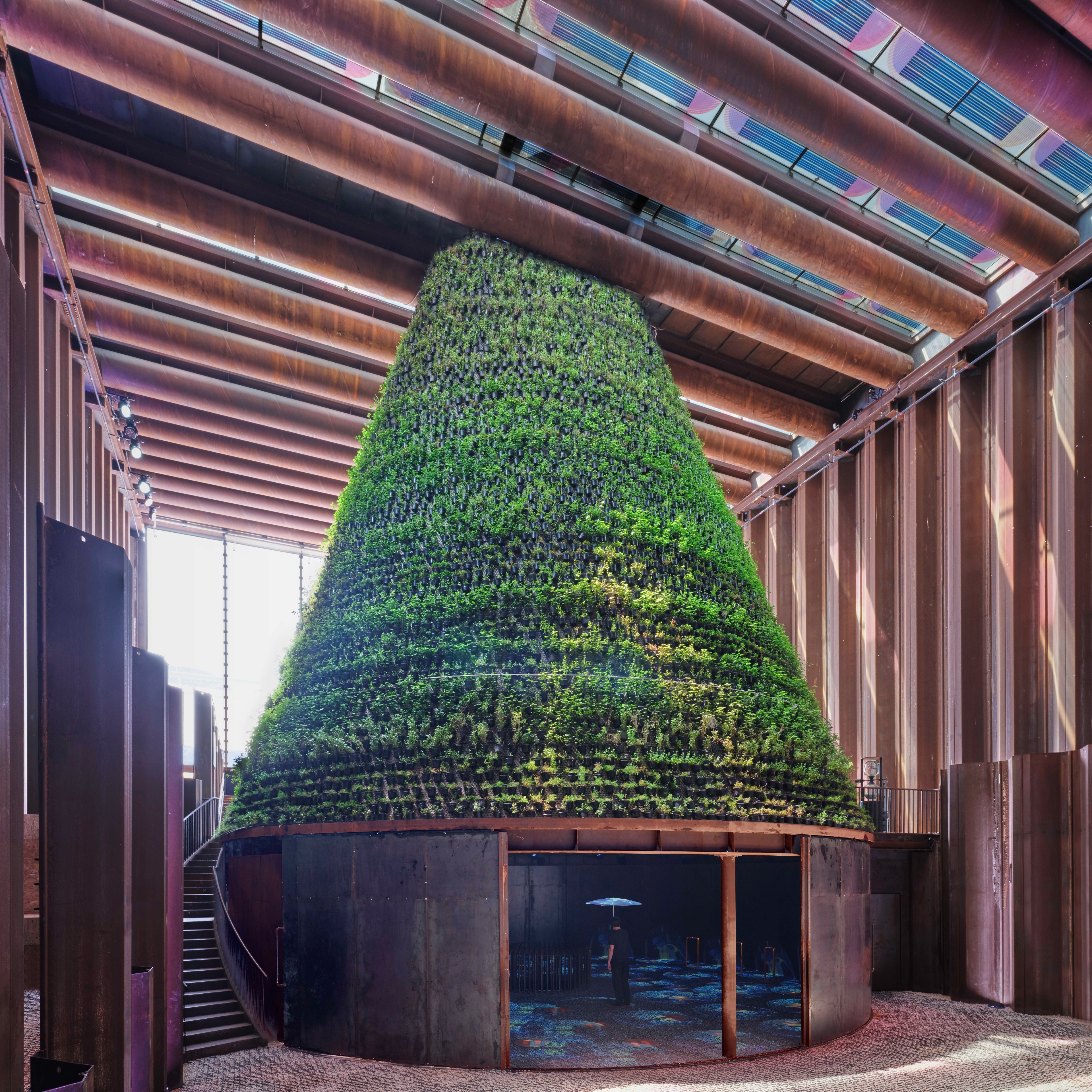
The design for the Dutch Pavilion, created by V8 Architects, elaborates on the climate crisis by proposing a temporary circular climate system, ‘a biotope in the desert, with a unique sensory experience'. There are organic, transparent solar cells to provide energy for the structure; a special technology that extracts water from the desert for the pavilion's needs; an 18m-high green cone that demonstrates how oyster mushrooms can grow naturally in a desert land; and more features by, for example, the likes of designer Marjan van Aubel and Amsterdam-based Buro Belén.
Japan Pavilion

Japan’s pavilion celebrates the Asian nation's traditional origami techniques and shapes. The building has been designed by Yuko Nagayama/NTT Facilities and aims to blend traditional Arabesque and Asanoha (hemp leaf) patterns, while also featuring a restaurant for visitors.
Saudi Arabian Pavilion
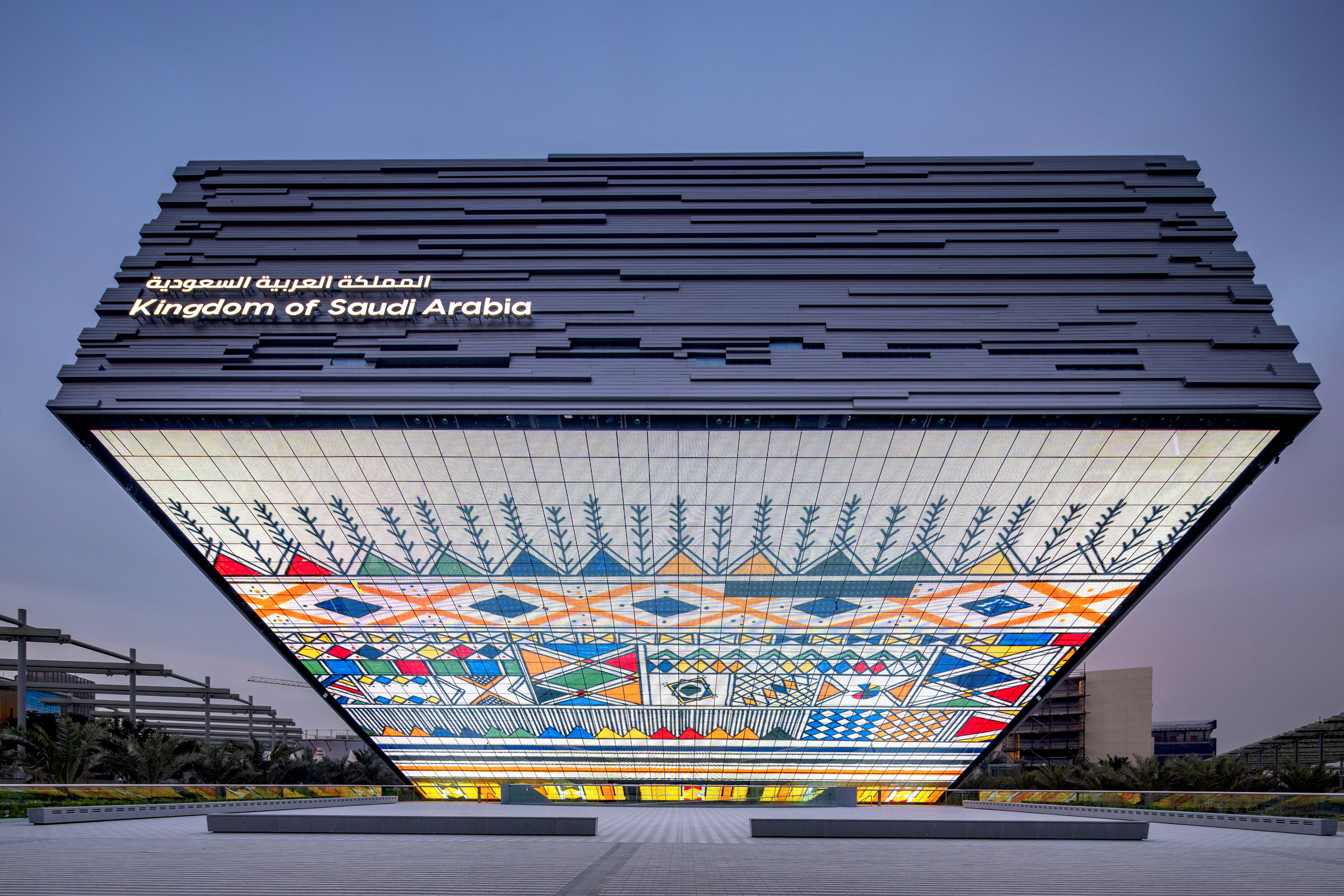
This eye-catching design is the brainchild of Boris Micka Associates. Not only is the structure the second largest pavilion at the Expo 2020 Dubai site (the pavilion spans an area of 13,059 sq m), it also boasts an impressive façade that draws the eye with its intricate, colourful patterns. More than just a pretty face, this is also a fully LEED Platinum Certified pavilion.
Swiss Pavilion

In a bold move, Zurich-based architecture studio OOS covered the Swiss Pavilion in reflective cladding, creating a giant mirror at the Expo site. The pavilion is fittingly titled Reflections. Featuring a red carpet that leads the visitor up to the front entrance, the building's shape was inspired by Bedouin tents.
Australian Pavilion

One more eye-catching structure, this time courtesy of the Australian participation. The pavilion was created by Brisbane-based architecture firm Bureau^proberts. The intricate design is composed of a ‘cloud' of vertical aluminium panels that hover above a plinth made of timber. The piece ‘encapsulates Australian optimism and creativity and celebrates Australian diversity and collaboration’.
INFORMATION
Ellie Stathaki is the Architecture & Environment Director at Wallpaper*. She trained as an architect at the Aristotle University of Thessaloniki in Greece and studied architectural history at the Bartlett in London. Now an established journalist, she has been a member of the Wallpaper* team since 2006, visiting buildings across the globe and interviewing leading architects such as Tadao Ando and Rem Koolhaas. Ellie has also taken part in judging panels, moderated events, curated shows and contributed in books, such as The Contemporary House (Thames & Hudson, 2018), Glenn Sestig Architecture Diary (2020) and House London (2022).
-
 A former agricultural building is transformed into a minimal rural home by Bindloss Dawes
A former agricultural building is transformed into a minimal rural home by Bindloss DawesZero-carbon design meets adaptive re-use in the Tractor Shed, a stripped-back house in a country village by Somerset architects Bindloss Dawes
-
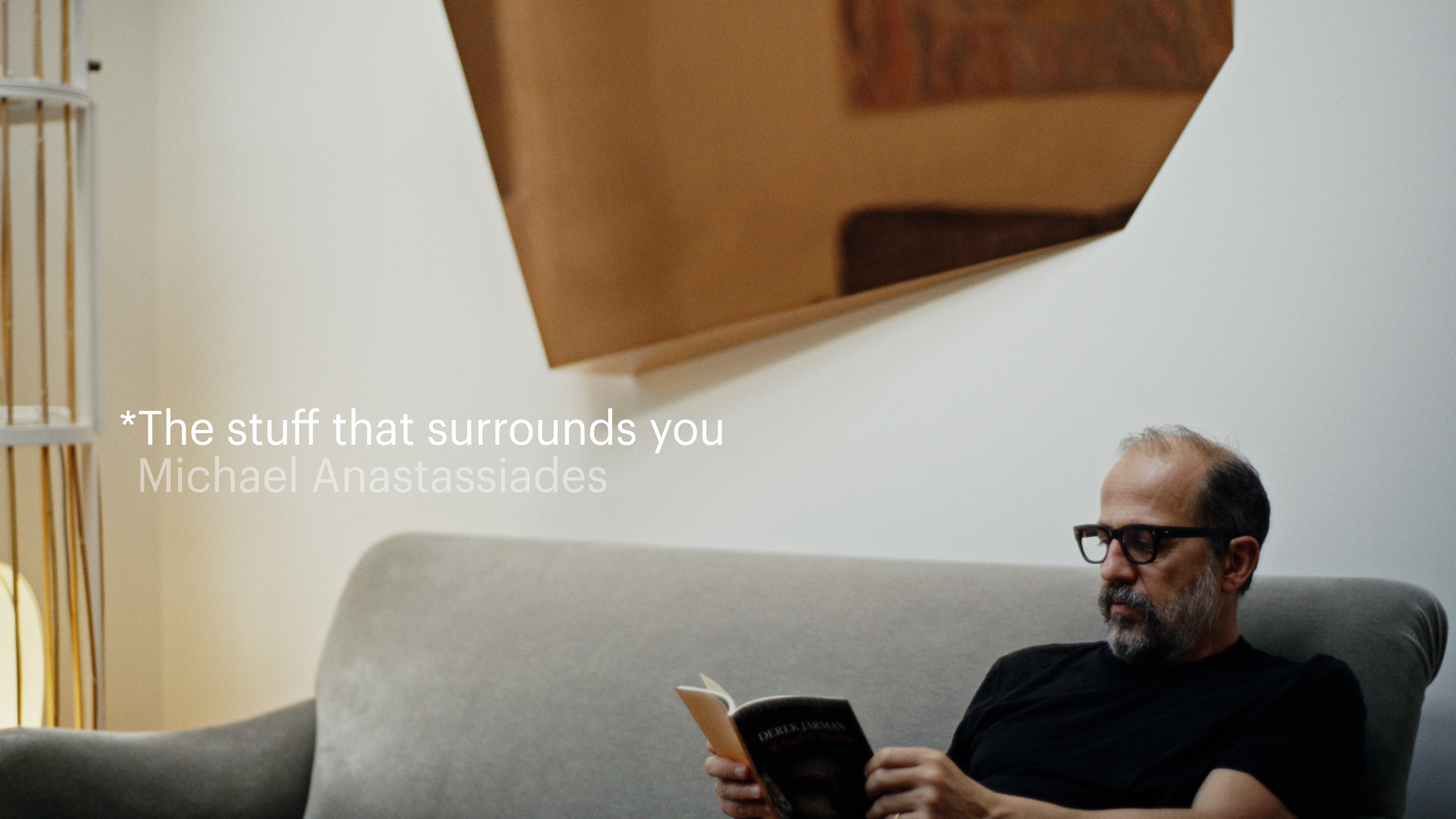 The Stuff That Surrounds You: Inside the home of designer Michael Anastassiades
The Stuff That Surrounds You: Inside the home of designer Michael AnastassiadesIn The Stuff That Surrounds You, Wallpaper* explores a life through objects. In this episode, we step inside one of the most considered homes we've ever seen, where Anastassiades test drives his own creations
-
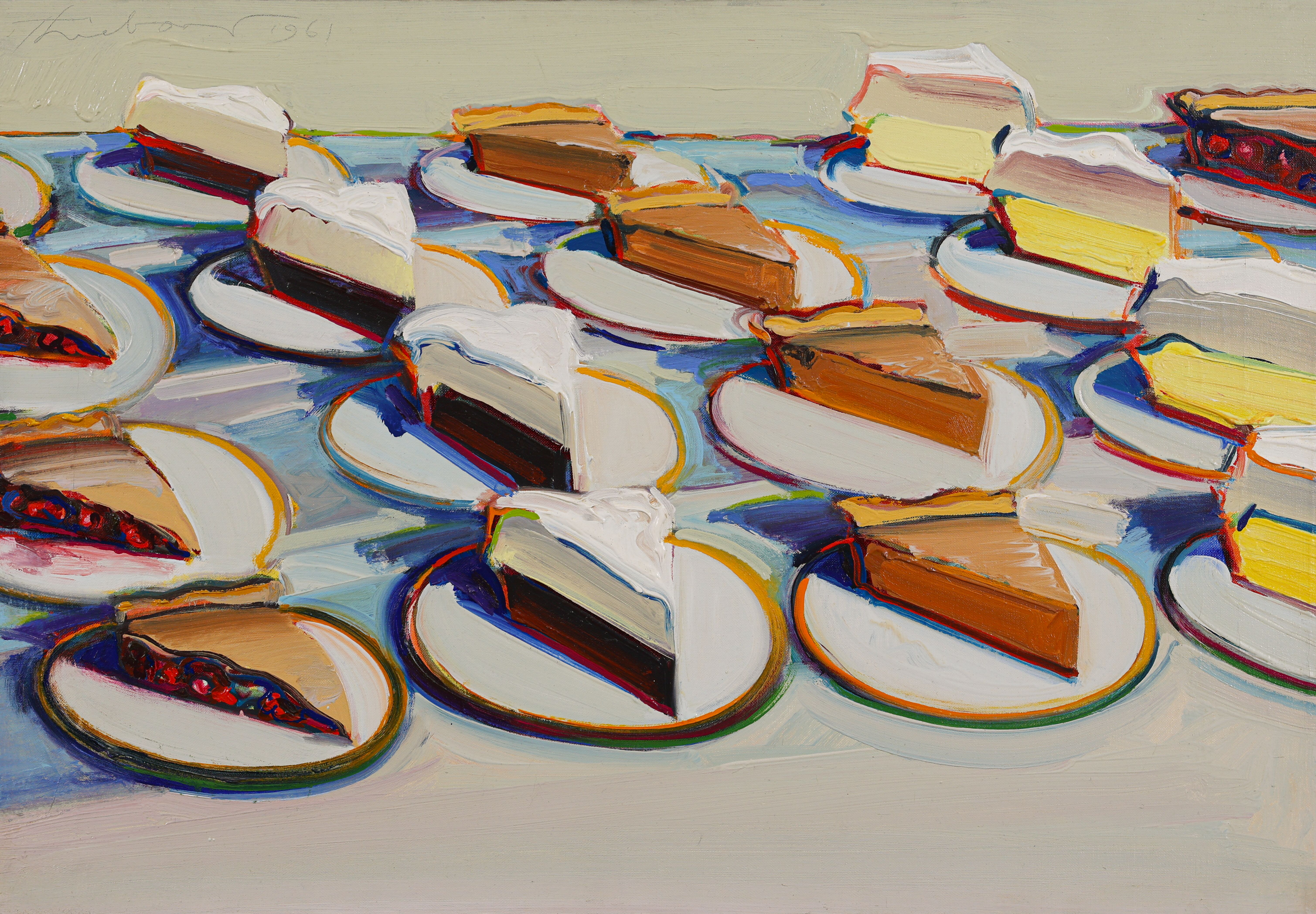 Why are Wayne Thiebaud’s paintings at the Courtauld so tempting?
Why are Wayne Thiebaud’s paintings at the Courtauld so tempting?The American artist’s thickly painted slices of cake at the Courtauld are some of our favourite artworks seen this year. What makes them so special?
-
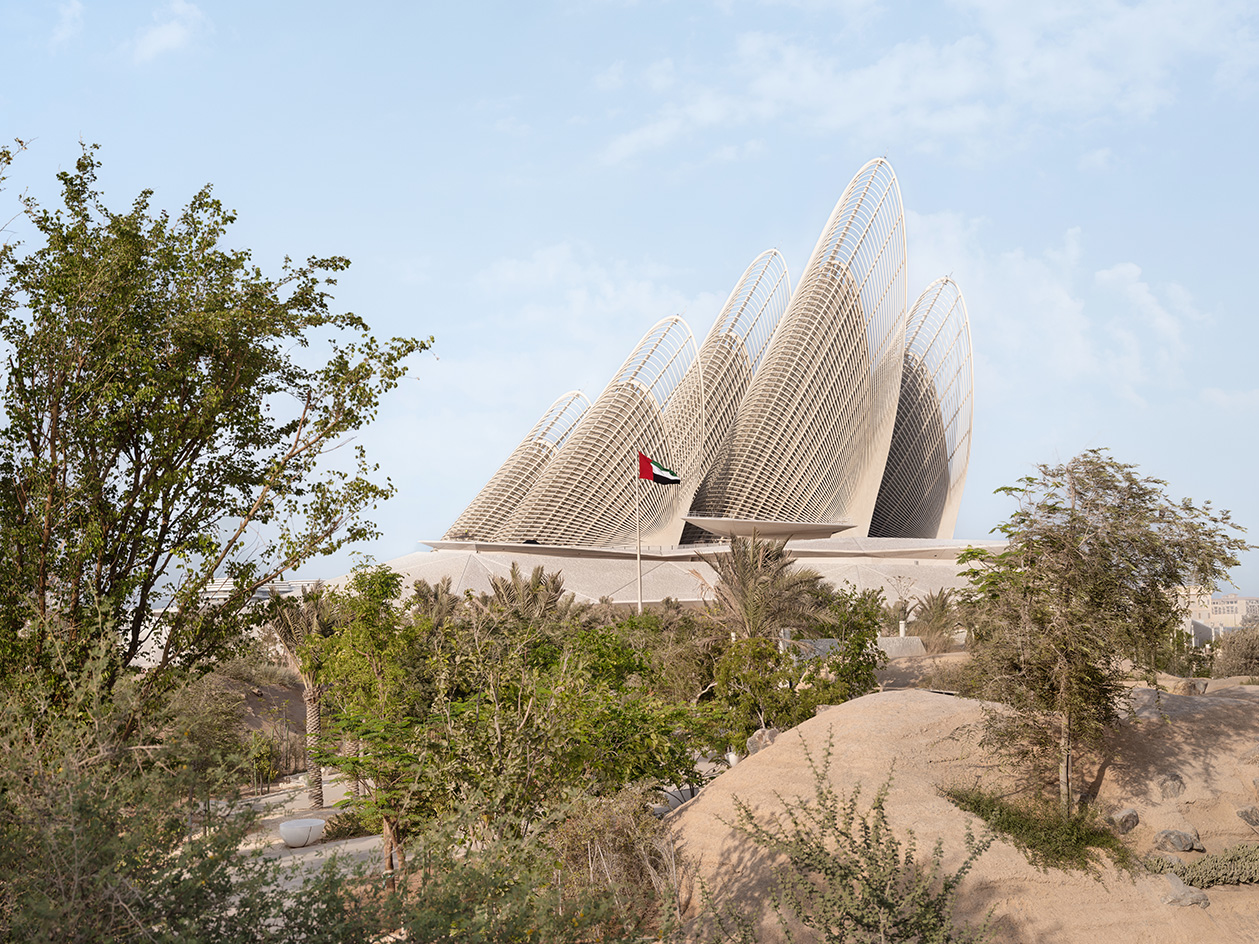 Zayed National Museum opens as a falcon-winged beacon in Abu Dhabi
Zayed National Museum opens as a falcon-winged beacon in Abu DhabiFoster + Partners’ Zayed National Museum opens on the UAE’s 54th anniversary, paying tribute to the country's founder and its past, present and evolving future
-
 RIBA launches new awards – and for the first winners, we look to the Middle East
RIBA launches new awards – and for the first winners, we look to the Middle EastThe RIBA Middle East Award winners are announced today. The first of the organisation's two new territory awards series honours a women-only mosque, a luxury hotel, a city park and more
-
 Oystra is ZHA’s sculptural vision for living in the United Arab Emirates
Oystra is ZHA’s sculptural vision for living in the United Arab EmiratesMeet the team translating ZHA’s bold concept for the new development into ‘a community elevated by architecture’ – Dewan Architects + Engineers and developer Richmind
-
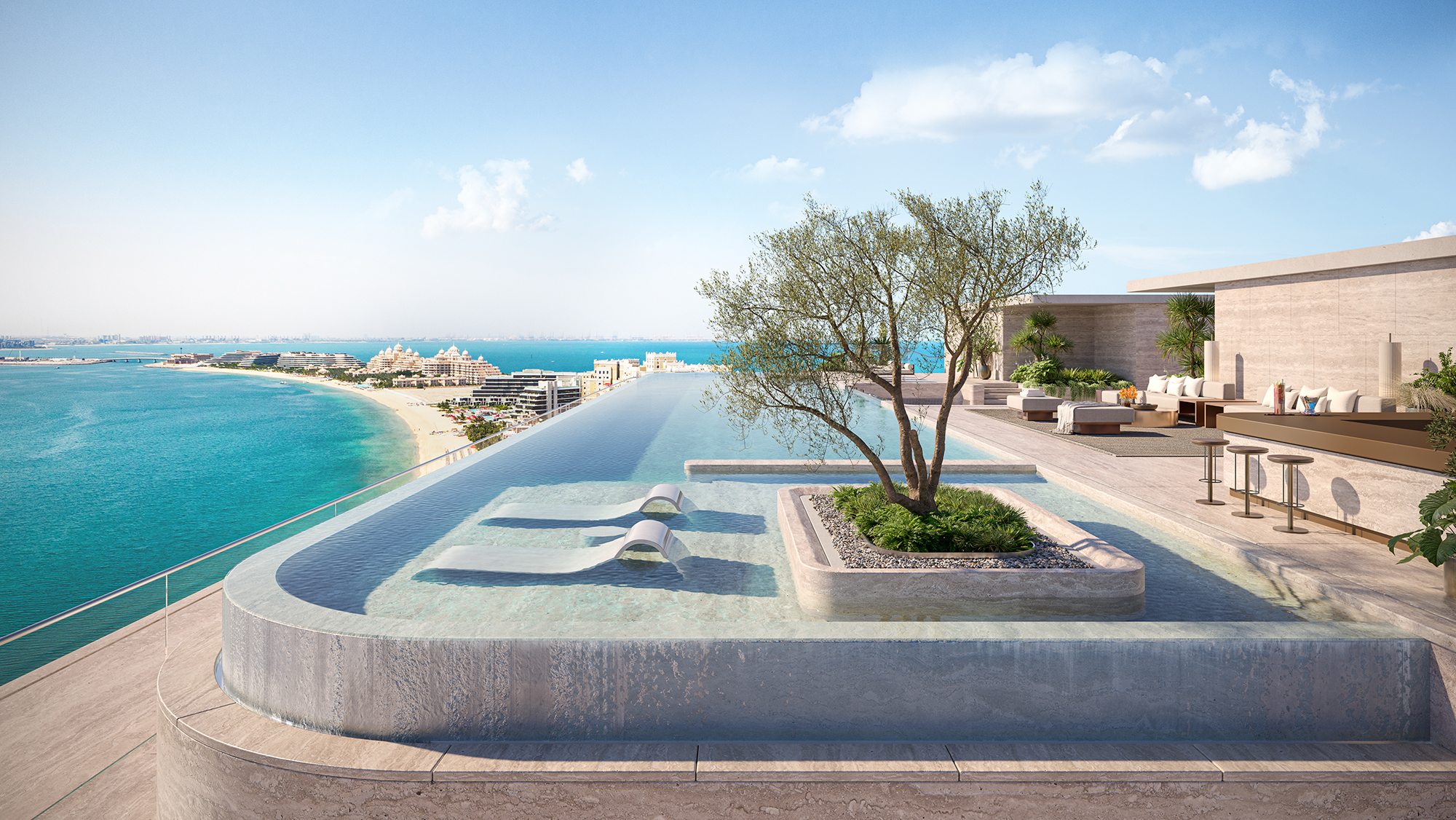 A Dubai ‘sky palace’ debuts developer Omniyat’s new Bespoke category
A Dubai ‘sky palace’ debuts developer Omniyat’s new Bespoke categoryOmniyat Bespoke, the developer’s new ultra-luxury arm, launches with the Luna Sky Palace penthouse at Orla, Dorchester Collection
-
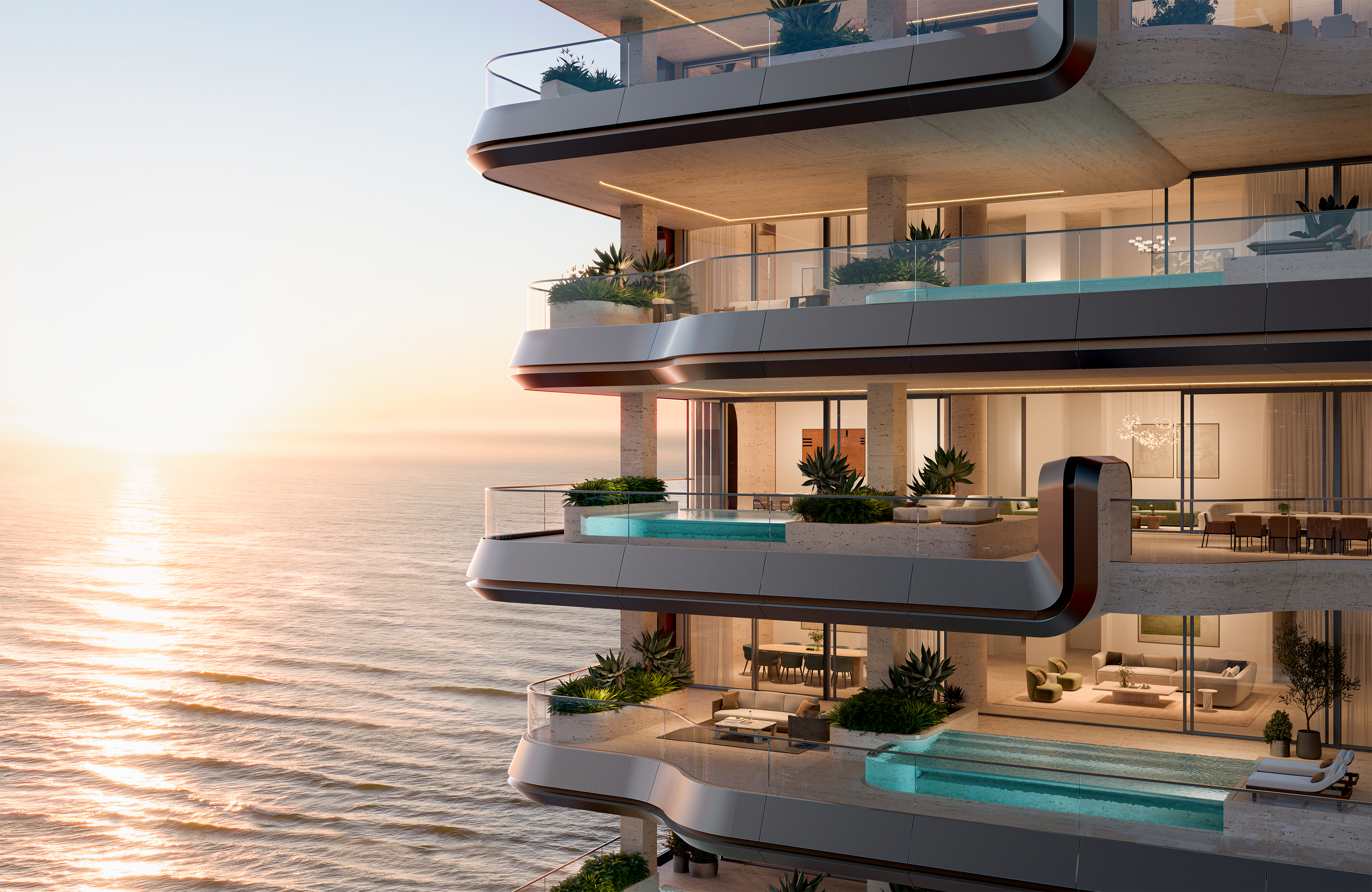 Omniyat launches The Alba, new Zaha Hadid Architects-designed residences in Dubai
Omniyat launches The Alba, new Zaha Hadid Architects-designed residences in DubaiDeveloper Omniyat announces The Alba, ultra-luxury residences managed by Dorchester Collection and designed by Zaha Hadid Architects to blend ‘nature and cutting-edge design’
-
 Blue Copper Loft is a Dubai sanctuary for a modern nomad
Blue Copper Loft is a Dubai sanctuary for a modern nomadBlue Copper Loft designed by Anarchitect in the heart of Dubai is a peaceful, yet luxurious sanctuary for a modern nomad
-
 Art Jameel pavilion in Dubai is a dome to fight climate doom
Art Jameel pavilion in Dubai is a dome to fight climate doomArt Jameel pavilion by Lebanese practice theOtherDada flags sustainability in Dubai, and opened to coincide with COP 28
-
 Installation SUPER LIMBO activates the empty building site of Sharjah Mall
Installation SUPER LIMBO activates the empty building site of Sharjah MallSUPER LIMBO installation by Limbo Accra and Ivorian textile brand Super Yaya uses weaving methods to activate the paused building site of Sharjah Mall during Sharjah Architecture Triennial 2023